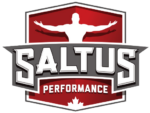INTRODUCTION
Basketball is one of the world’s most popular sports. In Canada, the popularity of basketball is at an all-time high, which may be attributable several cumulative factors, such as the 20th anniversary of the National Basketball Association (NBA) in Canada, the illustrious career of two-time NBA Most Valuable Player (MVP) and global sports ambassador Steve Nash, the resurgence of the Toronto Raptors as a competitive NBA franchise, and Canadians becoming the number one overall NBA draft picks for the last two consecutive years. Additionally, within this relative timeframe, Simon Fraser University (SFU) in Burnaby, British Columbia became the world’s first international National Collegiate Athletic Association (NCAA) university, competing in the Greater Northwest Athletic Conference (GNAC) against strong American competition.
As a result of the increasing prominence of basketball in Canada, we can expect more emphasis to be placed on researching and studying sport science in an attempt to increase the development of basketball players as the popularity of the game continues to flourish and Canadians begin competing at higher levels with stronger competition. However, while much research has been conducted on the sport of basketball with respect to performance testing, cardiovascular fitness, anaerobic fitness, repeated sprint ability, power, jumping, and agility, strength coaches and basketball trainers have generally been poor at translating this abundance of theory into meaningful practice.
PROBLEM 1: EARLY SPECIALIZATION AND YEAR-ROUND COMPETITION
There is increasing pressure from parents and coaches to find the next big talent and there is the thought that the best way to do this is to have children playing their sports as much as possible by starting and specializing at their sport from an early age. Moreover, instead of playing a “normal length” season, young athletes are competing year-round through spring and summer leagues in an effort to get more practices and games under their belts, and to gain more exposure. However, this creates a scenario where young athletes are practicing and competing so much that they do not give their bodies a chance to adequately rest and recover from the physical stresses of their sport. As a result, younger athletes are now encountering overuse injuries that are typically only found in adult, professional athletes. This has the potential to cause early burnout and shorten the length of an athlete’s competitive season, or even their career.
PROBLEM 2: “SPORT-SPECIFIC” STRENGTH TRAINING AND OVER-CONDITIONING
There is a current lack of emphasis on pure strength and power training. The National Strength and Conditioning Association (NSCA) states that it is the role of the Certified Strength and Conditioning Specialist (CSCS) to apply scientific knowledge to improve sport performance. Observationally however, the current training methodologies conducted by some coaches in the local athletic development community do not follow sound strength and conditioning principles. Contrarily, the exercises used by local trainers are often overly sport specific, and instead focus on inducing and enduring fatigue, and developing “mental toughness” (which arguably falls outside the scope of a strength coach’s role) rather than concentrating on sound programming, loading and exercise selection for optimal development of the physiological characteristics such as strength and power that will transfer to greater sport performance.
THE BASKETBALL S&C BLOG SERIES
At Saltus Athletics, it is our intent to remedy these contemporary strength & conditioning issues and increase the quality of training within the local athletic community. In the coming weeks, we will release a series of blog posts that provide an introductory resource for strength & conditioning professionals and a general framework for designing and implementing a comprehensive, periodized athletic development program for collegiate basketball.
